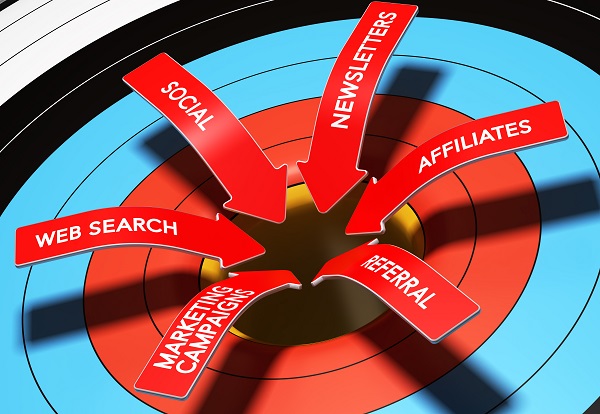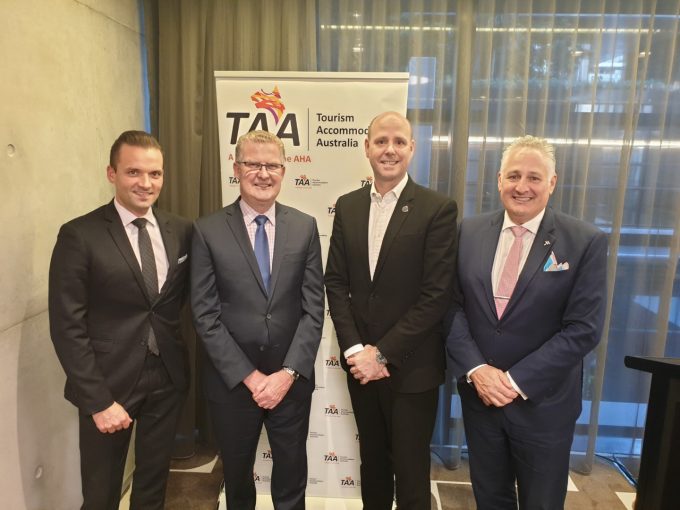
A guide to cross channel marketing
Cross channel marketing. Those three words strike fear into the hearts of many accommodation providers. But it doesn’t have to be like that.
Cross channel marketing isn’t as complicated as it sounds. Once you’ve got your head around the concept, it’s just a matter of harnessing the opportunities cross channel marketing provides to increase your customer base and loyalty to your brand.
What is cross channel marketing?
Now more than ever, cross channel marketing is an important tool that can help you establish an ongoing relationship with your customers.
Cross channel marketing is about optimising the customer experience so they develop an allegiance to your brand and spread the good word.
This happens when you engage with customers via coordinated digital channels that deliver a consistent streamlined message about your brand.
You might currently rely on online travel agents and physical travel agencies for recommendations but these agencies can charge hefty commissions and there is no guarantee that OTAs and shop-front agents won’t promote other similar accommodation options over and above yours.
Name your channel
Channels include OTAs, TripAdvisor, social media (Facebook, Twitter, Instagram, Google+, YouTube), emails, newsletters and your website.
Your website is one of your greatest assets and a crucial platform to offer customers access to several channels that will enhance the value of your brand.
But not all channels are going to work for your guests. This is where your knowledge of your guest demographic comes in: cater to your customers’ needs and wants and choose the channels that work best for you.
The customer journey
Once upon a time, the customer journey was simply a matter of going through good old-fashioned physical channels like word-of-mouth, a physical travel agency, phone call to the hotel and face-to-face interactions with hotel staff.
Times have changed and the customer journey has become a lot more complicated in a crowded marketplace where accommodation providers are jostling for their attention.
On average, customers start looking at travel and accommodation options 45 days prior to their trip. During this time, they dedicate six to eight hours to research, exploring destinations and locations through OTAs such as Booking.com, Expedia, Wotif andAgoda.
They also spend a lot of time moving back and forth across channels reading online reviews about the properties that interest them on OTAs and TripAdvisor, heading to the accommodation website (where they should also be able to access reviews and testimonials), and going back to the OTAs where they check the reviews again.
Customers search for accommodation via the web using a desktop computer, laptop, mobile phone or tablet. Thirty-five percent of all bookings are now made via mobile devices. That number is growing fast with an estimated increase to 50 percent in 2017.
During their journey, customers are also choosing to switch between devices, starting out with a smartphone or tablet and completing the transaction using a laptop or home computer.
Website engagement
A website continually updated with better and more interesting information that cannot be found on an OTA is a tantalising carrot for the customer that could influence their decision to book direct, which is what you want.
Things to do every month:
- One post of things to do (local tours/attractions that includes some free activities)
- Two posts of recommendations (where to dine, where to shop, art galleries, etc.)
- Two ‘what’s on’ posts (posted at least three months prior to the event)
- One special offer that is tied into direct booking benefits that are not offered to customers who book on an OTA
- One sharing post (community sharing promoting a community organisation)
- One competition
- One article (500 words maximum)
- Instagram story telling (five to eight images a month)
To weave your brand story across channels, everything posted to the website needs to be shared on social media with links back to the full post/article.
If necessary, you can tailor the content to suit each channel but the aim is to lighten your workload and present a consistent brand experience across channels.
For example, a link to a 500-word article on your website could be posted to your Facebook page and included in your Twitter feed and email updates.
Tools of the trade
The way your image is presented on your website is going to have an impact on customer engagement. For example, a click-through picture gallery and video presentations that reveal a ‘best of’ for your property will enhance the customer experience and potentially drive more traffic to your site to book direct.
Essential tools include video, high resolution images, PDF downloads with maps, tips, itineraries. Mobile friendly websites: Google will no longer show a hotel, at all, during any search if that hotel does not have a website optimised for a mobile search. Keeping the content fresh and lively is an important key to success along with responding quickly and professionally to any negative feedback that pops up on TripAdvisor.
Nobody is saying that cross channel marketing is the holy grail. The most important thing is to establish a strong and enduring relationship with your customers. But first you must get them to notice your brand through all the white noise out there in a crazy marketplace. That’s where cross channel marketing can make a difference.
Breakout
You might currently rely on online travel agents and physical travel agencies for recommendations but these agencies can charge hefty commissions.
To weave your brand story across channels, everything posted to the website needs to be shared on social media with links back to the full post.






